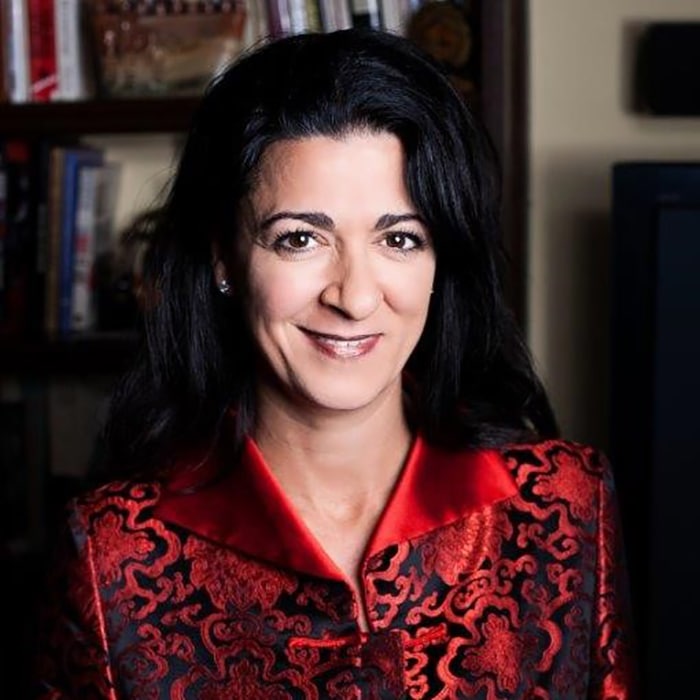Shaping the physician of the future has been saved

Perspectives
Shaping the physician of the future
An evolving care model in the health care ecosystem
The health system is preparing its physicians for a future that will likely look very different from today. Trends such as increasing costs, value-based payment models, and personalized care are all coming together to disrupt the traditional health care ecosystem. Learn how the role of the physician is changing to align with the future of health care.
Explore content
- What’s driving change for physicians?
- Emerging archetypes spotlight physicians’ changing role
- How can health systems create their own future?
- Get in touch
- Join the conversation
What’s driving change for physicians?
Despite the United States spending a projected 17.9 percent of its gross domestic product (GDP) on health care in 2017—10,739 dollars per person—the system is underperforming relative to that investment. This is one of the factors accelerating systemwide efforts to introduce new ways of performing traditional clinical tasks more efficiently and cost-effectively.
- While the US spends twice as much on health than all other Organization for Economic Co-operation and Development (OECD) countries, the country falls below the OECD average in life expectancy gains.
- Unnecessary care wastes roughly 30 percent of total US health expenditures per year, exceeding $1 trillion annually, as administrative overhead consumes 25 percent of US hospital expenditures.
- More than 250,000 deaths per year are due to medical errors, now the third leading cause of death in the US.
- Seventy percent of Americans surveyed cite the US health care system as being "in a state of crisis" or having "major problems."
Physician burnout, an evolving care model, and technology advances are also reshaping the role of the physician to drive future value.
Physician burnout
Physician burnout and decreased productivity are major factors driving the need for change in the medical profession. Some physicians are so dissatisfied with their profession that they plan to retire early or exit the field.
These actions have the potential to exacerbate a looming problem: Physician demand continues to outpace supply. Improving physicians’ work performance and satisfaction is a business imperative; in part because of their outsized role in the US health care system: Decisions made by primary care physicians (PCPs) influence almost 90 percent of total health care costs.
Health care systems get the most value when their physicians and other clinicians are practicing at the “top of their license”—focusing their time, attention, and effort on providing patient care rather than completing administrative tasks. Technology advances should enable this, but thus far, technology has largely proven to be more of a burden than an enabler.
Evolving care model
Transformational investments and initiatives are coming from within and outside of health care. Well-funded, nontraditional players from the consumer, retail, and technology sectors are helping to accelerate the pace of change and are prompting hospitals and health systems to re-evaluate existing functions, roles, and services.
- Apple announced it is entering the personal health record (PHR) space with Apple Health, a new platform that will interface with electronic health records (EHRs) at 12 US hospitals.
- J.P. Morgan Chase, Berkshire Hathaway, and Amazon have partnered to establish an independent, not-for-profit health care company, Haven Healthcare, for their one million US employees. The trio’s goal is to improve health care services and cost efficiency for their employees.
- Amazon rolled out a line of private label over-the-counter medicines, the Basic Care line, and is building a business selling a wide array of medical supplies to doctors, dentists, and hospitals.
These are just a few examples of nontraditional players entering the health care marketplace and rethinking the entire process of care delivery. Without making a large investment in infrastructure, highly capitalized entrants often have the flexibility to test new and multiple models of care delivery, taking advantage of emerging technologies and their ability to access geographically dispersed resources.
Technology advances
Technologies will power the health care model’s evolution and reshape physicians’ role in driving future value. In just a few decades, automated systems may displace up to 80 percent of physicians’ or clinicians’ standard work—freeing them from administrative tasks to focus on patient care.
Patients’ use of technology is also impacting the physician’s place in the health care ecosystem. With applications literally at their fingertips via mobile phone, laptop, or tablet, patients can immediately access care when it’s needed.
One obstacle to forward movement? Physicians are often reticent to fully embrace new technology-enabled care models such as virtual health. But despite present-day hurdles to physicians’ technology uptake, the health care industry is inexorably progressing toward an augmented workforce that combines people and technology to get things done in a way that is more productive and more rewarding to the worker—physicians included.
Emerging archetypes spotlight physicians’ changing role
Evidence is mounting that a technology-enabled, evolving care model has the potential to change what role the physician of the future will play in health care delivery, infrastructure, and enablement. The transition will not be like flipping a light switch, but evolution is already under way and we expect it to accelerate over the next five to 10 years, although the pace of change is likely to vary across the country.

How can health systems create their own future?
With the wider health care ecosystem transforming around them, health systems should consider investing in their physicians’ futures—or they could risk being disrupted. What can today’s hospitals and health systems do to help their physicians make the transition toward the future of health and preventive care?
Based on our research and historical experience with health care organizations of all shapes and sizes, we have identified a three-pronged approach that focuses on physician organization redesign, strategic change management, and smart investments in workforce and technology.
- Create a physician organization that enables all caregivers to practice at the top of their license, anticipates changes in care delivery, reduces burnout factors, and affirms physicians as partners in care rather than employees to be managed. Analyze how the evolving health care model is changing the nature of work and the future role of the physician. Identify a preferred future care model and let it guide the future physician organizational structure.
- Execute a deliberate change management process that is led by physicians and equips them to drive change rather than resist it. Overcoming physicians’ potential aversion to adopting new processes and technologies has major change management implications. Organizations should educate physicians on the "business of medicine" as it relates to cost and population health, as well as equip them with the skills they will need to care for patients in a future outcomes-focused, technology-enabled environment.
- Make smart investments in workforce and technology based on the future, not the past. Technology has the potential to enable physicians to improve their caregiving and care outcomes; however, the track record for many technologies, including the electronic health record, has been a disaster for some physicians. Therefore, when developing criteria for specific technology investments, include physician time and workflow in addition to business value. Consider investing in training tools that can help physicians feel confident about their changing role.
Physicians are key players as health care organizations start preparing for the future. These and other physician-focused initiatives can help health systems reduce or eliminate obstacles to improved physician performance and enable their clinicians to practice at the top of their license.
Physician of the future
Recommendations
The Future of Health
Explore the Future of Health™, where data, technology, and empowered consumers are driving a shift toward holistic well-being. Embrace digital transformation and navigate a patient-centered care model with help from our insights.



